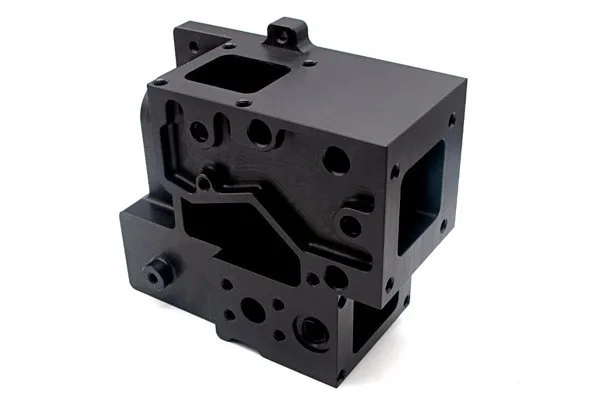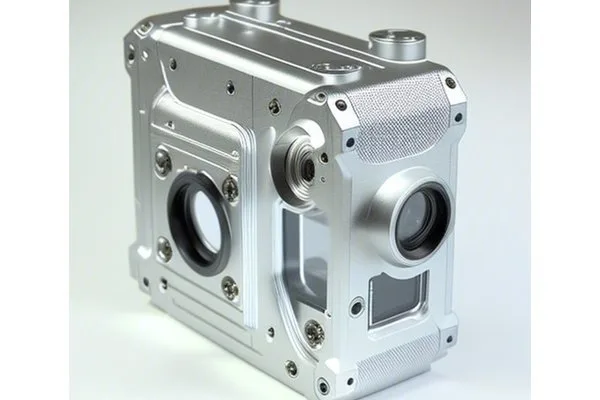Introduction: The Foundation of Precision
When it comes to CNC machining, especially in industries where aluminum components are crucial, achieving the right surface finish is no trivial task. Picture this: you’re on a quest for the perfect aluminum part that meets all the specs, yet you find yourself caught in a web of technical jargon and measurements. You’re not alone! Many machinists and engineers often ask, “How does the RA 0.8 surface finish in CNC machining impact the wear and tear of aluminum parts?”
If you’ve ever scratched your head over this question, or maybe you’ve heard the term “surface finish” tossed around like confetti at a parade without truly understanding its significance, then this article is your golden ticket. By the end, you will not only grasp the concept of RA 0.8 surface finish but also appreciate its critical role in enhancing the longevity and efficiency of aluminum components in various applications.
Understanding Surface Finish: A Key Player in CNC Machining
Let’s kick things off by diving into what surface finish actually means in the world of CNC machining. In layman’s terms, surface finish refers to the texture and smoothness of the part’s surface after machining is complete. Think of it as the appearance and feel of the part—like the silky finish of a designer dress versus the rough texture of burlap.
In the realm of precision engineering, surface finish is not a cosmetic factor; it impacts the performance, functionality, and wear characteristics of the part. A finely finished surface can minimize friction between moving parts, reduce wear and tear, and ensure a longer life span for mechanical components. This is where terms like “RA” come into play.
What Does RA Mean?
RA, or Roughness Average, is a quantitative measure of the surface finish. It’s typically measured in micrometers (µm) or microinches and represents the average roughness of the surface. A lower RA value indicates a smoother surface, while a higher RA value denotes a rougher texture. So, when we talk about RA 0.8, we’re referencing a relatively smooth surface finish, which is critical for applications where precision and minimal friction are paramount.
Why is RA 0.8 Important in Aluminum Parts?
Now that we’ve decoded RA, let’s get to the good stuff: why is RA 0.8 specifically important when it comes to aluminum parts? Think of aluminum as a star athlete—it performs incredibly well under the right conditions but requires a solid support system to shine. That support system includes the finish of the aluminum part.
Reducing Wear and Tear
One of the biggest challenges in machining aluminum is its tendency to create wear and tear on both the part itself and its mating components. With an RA 0.8 finish, the smoother surface promotes better lubrication, making it easier for oils or greases to create a protective barrier. Imagine trying to slide down a well-polished slide versus a rusty, gritty one—the difference is stark!
By reducing friction and wear, this specified surface finish leads to increased durability. Especially in high-rotation applications or where parts may experience high-speed interactions, having that RA 0.8 finish can mean the difference between a long-lasting component and one that fails prematurely.
Enhancing Performance
We’ve all been there: trying to drive a car that feels sluggish and unresponsive. You wouldn’t want the same experience with your machining components! With a proper RA 0.8 surface finish, the interface between two aluminum parts becomes seamless. This smooth interaction enhances performance, allowing parts to fit perfectly and function as intended—think of it as a well-oiled machine!
Additionally, improved performance translates into better energy efficiency. Lower friction means less energy is wasted, and that’s a win-win for both operations and costs.
Resistance to Corrosion
Aluminum naturally forms an oxide layer that protects it from corrosion but doesn’t think for a second that this is sufficient! A proper machining finish can enhance this protection. A smooth RA 0.8 surface finish minimizes crevices and pits where moisture and corrosive agents tend to settle. Like a well-sealed envelope, it keeps those pesky elements out!
Aesthetic and Quality Considerations
Let’s step aside from the technical chatter for just a moment—doesn’t a sleek, polished aluminum part look fantastic? The visual appeal of a finely finished surface speaks volumes about quality. When clients or end-users see a part that gleams, it not only boosts their confidence in the product but also reflects positively on the manufacturer.
The Process of Achieving RA 0.8 Surface Finish
Getting to that ideal RA 0.8 surface finish isn’t magic; it’s a blend of science, art, and precision engineering.
Machining Techniques
Various machining processes can yield different surface finishes. Techniques like milling, turning, grinding, and electrical discharge machining can all contribute to achieving an RA 0.8 finish. However, not all methods are created equal when you’re aiming for that perfect smoothness.
CNC milling is commonly utilized, wherein cutting tools remove material to achieve the desired depth and smoothness. The right tooling and feeds and speeds can significantly affect the final surface finish.
Turning operations are often used to create cylindrical parts. The orientation and condition of the cutting tool play crucial roles in achieving the smooth RA finish.
This method employs grinding wheels to remove material. It’s particularly useful for intricate designs and can yield ultra-smooth finishes, bringing the part closer to RA 0.
Post-machining polishing can further enhance the finish. This process usually employs abrasive materials to buff the surface.
Measurement Techniques
Achieving RA 0.8 isn’t merely about getting lucky—it’s about meticulous measuring and sampling! Several tools and techniques come into play to ensure the surface finish meets specifications.
Real-world Applications of RA 0.8 Surface Finish in Aluminum Parts
By now, you may be wondering: okay, but where is this RA 0.8 surface finish really making a difference? Fear not, dear reader! Let’s explore some real-world scenarios where this finish shines (quite literally).
Aerospace and Automotive Industries
In the aerospace sector, components often experience high stress and harsh environments. An RA 0.8 surface finish can mean more reliable fuel lines, braced structures, and engine parts. In automotive applications, think of engine blocks or transmission parts where smooth interactions can directly translate into better performance and longevity.
Medical Devices
Surfaces of medical devices must not only be smooth but also easy to clean and resistant to wear. From surgical instruments to implants, the RA 0.8 finish ensures that these components can withstand rigorous use while providing top-notch safety for patients.
Industry Equipment
In manufacturing equipment, aluminum components that engage in friction-based operations, like conveyor rollers, benefit enormously from an RA 0.8 surface finish because it minimizes wear, reduces noise, and enhances efficiency.
Conclusion: Unlocking the Potential of Aluminum with RA 0.8 Surface Finish
As we wrap our heads around the complex yet fascinating world of CNC machining and surface finishes, one thing stands out: achieving an RA 0.8 surface finish is not just a technical detail—it’s a game-changer. From minimizing wear and prolonging the life of aluminum parts to enhancing performance and aesthetics, this specification plays a crucial role across various industries.
So next time someone asks you, “Why does surface finish matter?” you’ll have the knowledge and tools to explain how a seemingly subtle detail can drive significant results.
In the grand tapestry of manufacturing, think of RA 0.8 as a thread woven tightly into the fabric of quality and performance. It ties everything together and ensures that components not only meet expectations but exceed them.
There you have it! No more confusion, no more abstract concepts. You are well-equipped to conquer the complexities of surface finish and appreciate its impact on the world of CNC machining. Now go out there and let your newfound knowledge guide your machining adventures!






